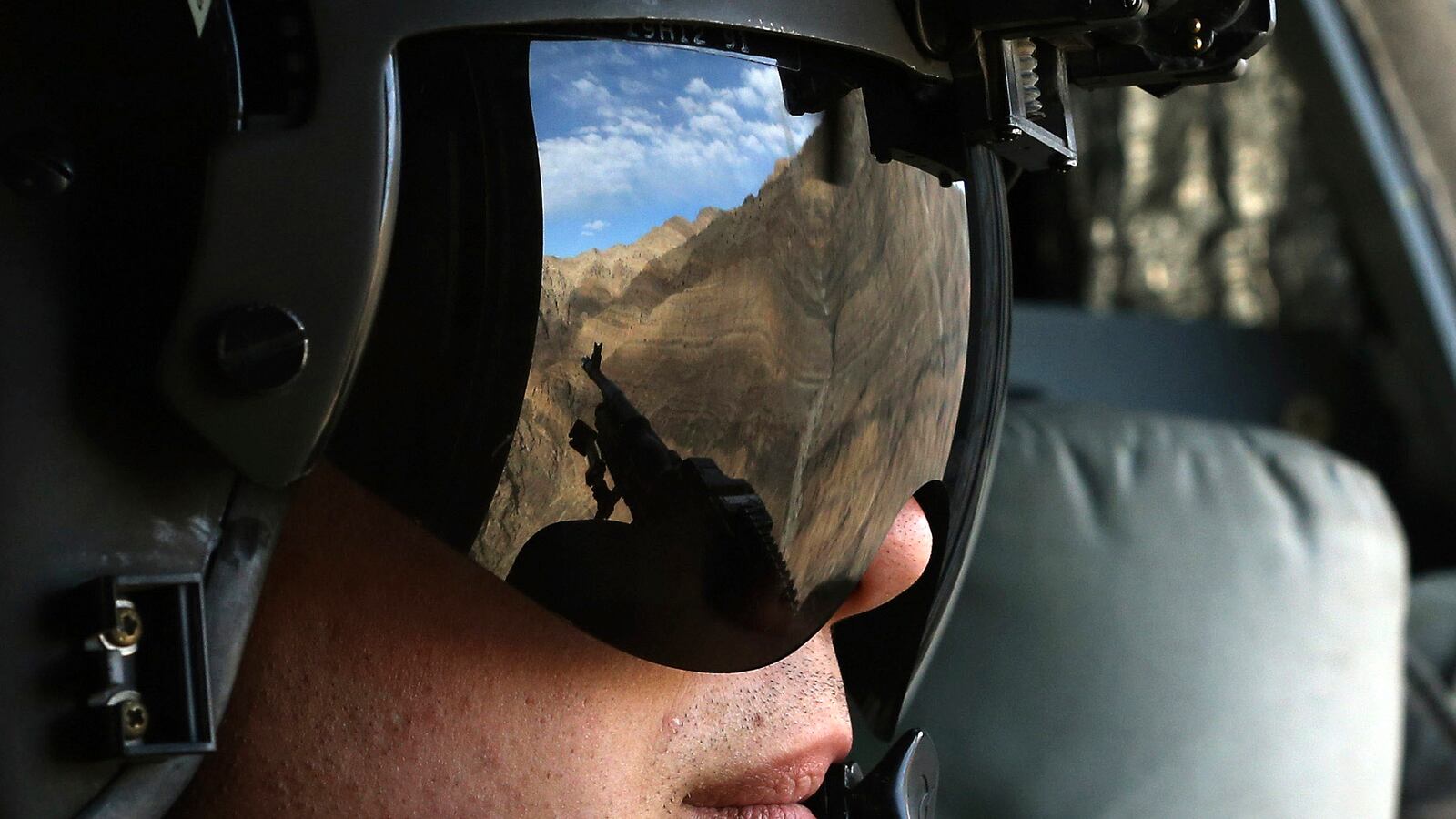President Obama announced Wednesday yet another delay in his plan to wind down the war in Afghanistan, saying 8,400 troops would remain there for a list of enemies that has grown from al Qaeda to the Taliban and now to the so-called Islamic State.
But many in the Pentagon are concerned that the president’s new plan isn’t much of a strategy at all. It’s just a holding action, to hopefully keep a lid on Afghanistan until after the election.
“There is no desire to end the war in Afghanistan. There is a desire to keep it off the front pages and make it a problem for the next administration,” as one Pentagon official explained to The Daily Beast.
The U.S. had planned to keep 5,500 troops through the end of the year. At first glance, the change in number may not have seemed particularly significant; the president added only 2,400 troops to the number of forces that will be in Afghanistan by the end of his presidency. But the fact the U.S. had to slow down its withdrawal from its longest war ever was a major acknowledgement by the administration that the U.S. has yet to train local forces that can successfully stop a burgeoning Taliban and the jihadists protected by them. In other words, the cornerstone of the American effort in Afghanistan was still shaky, a decade and a half into the war.
“This is a political number, not the number of troops to win,” a second defense official said.
Where the Obama administration once named al Qaeda as the top threat in Afghanistan, on Wednesday, it added ISIS and the Taliban as reasons for the change in troop numbers. In the last year, the Taliban has expanded its grip on that country’s urban centers and successfully taken back territory in parts of southern Afghanistan.
The 8,400 figure appeared to be a compromise, of sorts. On the one hand, there were those in the administration who feared that Afghan security forces have proven themselves incapable of fending off the Taliban on their own. On the other: an Obama pledge to move the U.S out of the war altogether.
At the newly proposed troop levels, the U.S. military is neither leading the fight to stabilize Afghanistan nor far enough away to help stop a potential Taliban resurgence. For many in the Pentagon, it was yet another risky withdrawal plan—calendar based, not conditions based. ]The Taliban surged its attacks on Afghan forces after the Obama administration promised, in the past, to drawdown from Afghanistan.
As of last month, there were 9,300 U.S. troops in Afghanistan. The president insisted the troops had limited objectives—even as they faced a longer list of enemies.
U.S. forces “are now focused on two narrow missions: training and advising Afghan forces, and supporting counterterrorist operations against the remnants of al Qaeda as well as other terrorist groups, including ISIL,” the president said, using the government’s preferred acronym for the terror group.
Army Gen. John W. Nicholson, the U.S. commander in Afghanistan, recommended the figure, according to an administration official who briefed reporters in a conference call on the condition of anonymity. Secretary of Defense Ash Carter said that he, as well as top military leaders, endorsed the troop number.
U.S. troops currently advise, and at times are side by side, their Afghan counterparts in the fight against the Taliban. In January, Army Sgt. Matthew McClintock died while fighting alongside Afghan forces against the Taliban in the southern part of the country.
The Taliban has expanded north as well, into areas it never controlled, like the northern Afghan city of Kunduz, where, last fall, U.S. troops mistakenly killed scores at Doctors with Borders Hospital. Among the reasons for the mistake listed in a U.S. military report on the attack was that its forces suddenly found themselves confronting Taliban in an area they did not know well. Kunduz is no longer under Taliban control.
About a third of U.S. troops there currently are engaged in counter terrorism operations; the additional forces are likely to be added to that effort, a U.S. official explained to The Daily Beast.
In other words: more troops could be now involved in fighting, despite U.S. claims that its forces are not in active combat in Afghanistan.
Just three years ago, when the U.S. had planned to keep 9,800 troops there by this time, Obama made little mention of the Taliban in a major policy speech at the war in Afghanistan. The enemy he said was al Qaeda that had affiliates expanding around the world.
“In Afghanistan, we will complete our transition to Afghan responsibility for that country’s security. Our troops will come home. Our combat mission will come to an end. And we will work with the Afghan government to train security forces, and sustain a counterterrorism force, which ensures that al Qaeda can never again establish a safe haven to launch attacks against us or our allies,” Obama sai in his 2013 speech before National Defense University.
On Wednesday, the president said the Taliban “remains a threat” And he acknowledged that the Afghan security forces had struggled to push back them back.
Even before the announcement, the U.S. appeared increasingly focused on the Taliban. Last month, the U.S. military expanded its strike authorization to include the Taliban, not just al Qaeda, and Nicholson already has approved several such strikes in support of Afghan forces.
In addition to Taliban forces moving into more urban areas, ISIS has sought to establish its foothold in southeast Afghanistan. All the while, a fractured leadership governs Afghanistan.
The new troop figure was the result of “lot of lessons learned from the last two fighting seasons,” a second administration official on the call with reporters explained.
But the term “fighting season” is itself a bit of an anachronism, according to military officials. In the last two years, as U.S. forces withdrew, there no longer is a single team for heavy combat. Fighting in Afghanistan now is an all year event, an unintended consequence of the ongoing U.S. effort.






